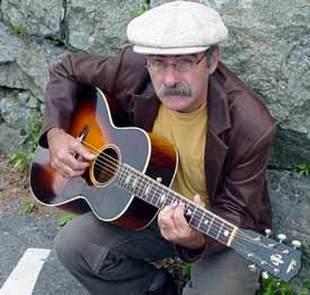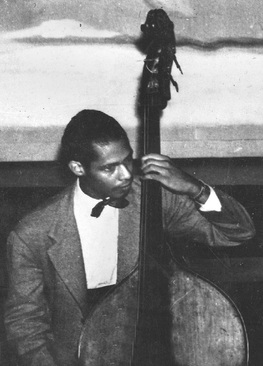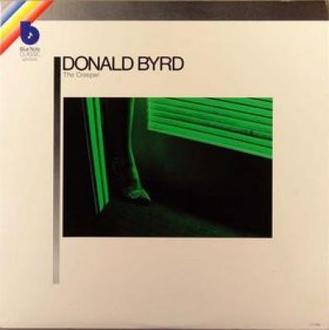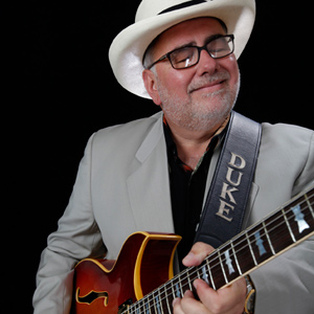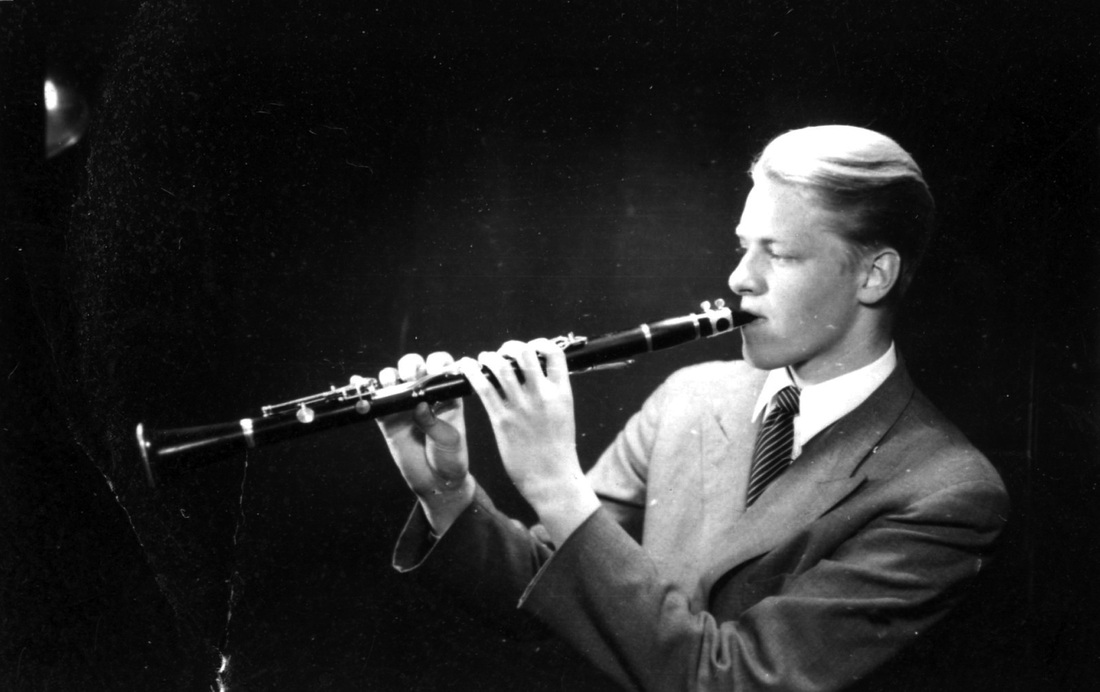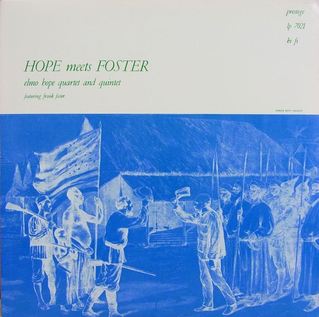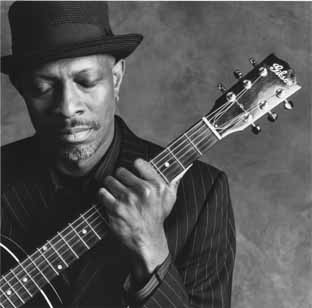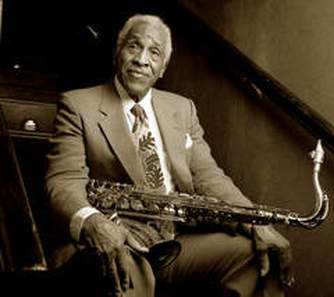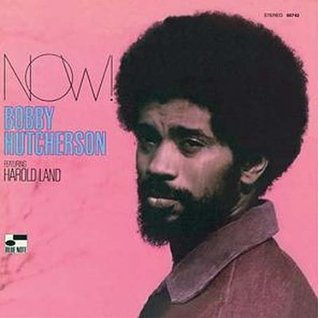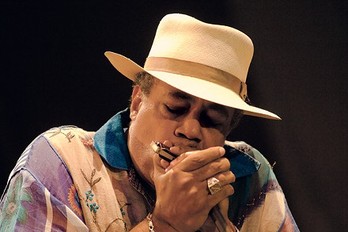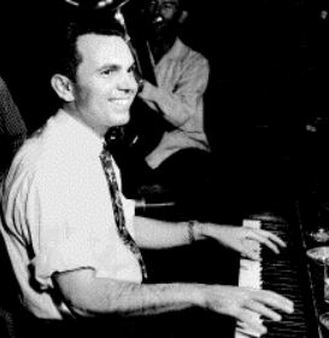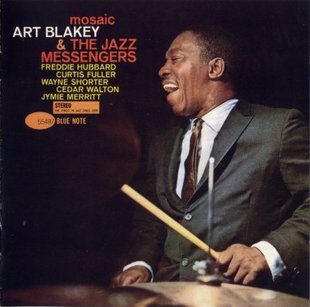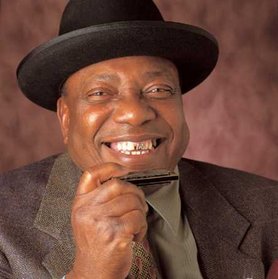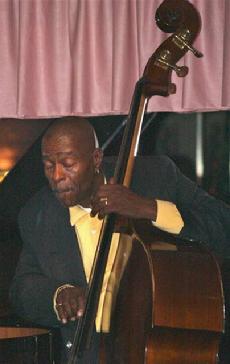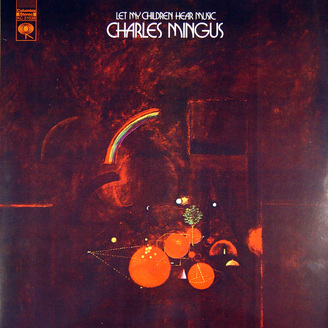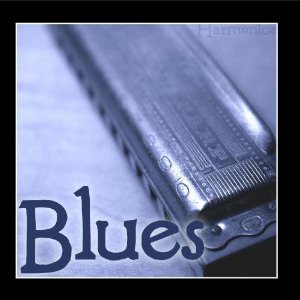BLUES ARTIST BIRTHDAY: Roy Book Binder (1943) - A student and friend of the Rev. Gary Davis, he is equally at home with blues and ragtime, he is known to shift from open tunings to slide arrangements to original compositions, with both traditional and self-styled licks. His storytelling emphasis is another characteristic that makes his style unique. Binder was born in Queens, New York, United States. Upon graduation from high school, he joined the Navy and undertook a tour of duty in Europe. He bought his first guitar at a military base in Italy. After his enlistment was up, he returned to New York where he met one of his lifelong friends, Dave Van Ronk. Impressed with his friend's playing, Binder sought out Davis who also lived in New York, and became first a student of Davis and later a chauffeur and tour companion. Much of Binder's original material was based on his time on the road with Davis. By the mid-to-late 1960s Binder was recording for both Kicking Mule and Blue Goose Records. In 1969, he toured England with Arthur "Big Boy" Crudup and Homesick James. After meeting another of his life's influences, the bluesman Pink Anderson, Binder released his first album, Travelin' Man, on Adelphi. The album was named after one of the songs that Binder learned from Anderson. In 1973 he began a partnership with fiddler Fats Kaplin, and they recorded the Git Fiddle Shuffle in 1973. Binder and Kaplin performed together for three years, playing numerous concerts and recording a second album, Ragtime Millionaire in 1977. After this partnership dissolved, Binder began touring the country, living in a motor home, and concentrating on live performances. During the 1980s, Binder released several albums, including Bookeroo in 1988. Binder has been described as a “guitar pickin' hillbilly bluesman”, and has released eleven albums. He has performed at most major blues and folk festivals in the United States and Europe, including Merlefest. Notables that have shared the stage with Binder include Bonnie Raitt, B.B. King, John Jackson, Sonny Terry, Doc Watson, Ray Charles, and Brownie McGhee. Binder has appeared regularly on Nashville Now, and has been included in Sheldon Harris' book, The Blues Who's Who. Binder is a veteran guitar instructor, and can often be found teaching at the Fur Peace Ranch with Jorma Kaukonen and others whose lives have been influenced by Davis. There he demonstrates songs, turnarounds, chord variations, right hand methods, and many of his own powerful adaptations and unique approaches to the blues. Binder's album, Hillbilly Blues Cats (Rounder), was named as one of the ten most essential acoustic guitar albums of 1992.
JAZZ ARTIST BIRTHDAY: Jimmy Blanton (1918) - Born in Chattanooga, Tennessee, Jimmy Blanton was an influential jazz double bassist. He is credited with being the originator of more complex pizzicato and bowed bass solos in a jazz context than previous bassists. Blanton originally learned to play the violin, but took up the bass while at Tennessee State University, performing with the Tennessee State Collegians from 1936 to 1937, and during the vacations with Fate Marable. After leaving university to play full time in St. Louis with the Jeter-Pillars Orchestra (with whom he made his first recordings), he joined Duke Ellington's band in 1939. Though he stayed with Ellington for only two years, Blanton made an incalculable contribution in changing the way the double bass was used in jazz. Previously the double bass was rarely used to play anything but quarter notes in ensemble or solos but by soloing on the bass more in a 'horn like' fashion, Blanton began sliding into eighth- and sixteenth-note runs, introducing melodic and harmonic ideas that were totally new to jazz bass playing. His virtuosity put him in a different class from his predecessors, making him the first true master of the jazz bass and demonstrating the instrument's unsuspected potential as a solo instrument. Such was his importance to Ellington's band at the time, together with the tenor saxophonist Ben Webster, that it became known as the Blanton–Webster band. Blanton also recorded a series of bass and piano duets with Ellington, In 1941, Blanton was diagnosed with tuberculosis, cutting short his tenure with Ellington. His last recording session was cut on September 26, 1941 in Hollywood. Blanton died the following year after retiring to a sanatorium in California, aged 23, on July 30, 1942.
JAZZ ALBUM RECORDED: Donald Byrd – The Creeper (1967)
Track Listing:
1. Samba Yantra
2. I Will Wait For You
3. Blues Medium Rare
4. The Creeper
5. Chico-San
6. Early Sunday Morning
7. Blues Well Done
Review by Scott Yanow at Allmusic:
This LP was trumpeter Donald Byrd's final album in the hard bop idiom and it went unissued until 1981. For the last time, Byrd was heard in prime form in an acoustic format. His notable sextet also included altoist Sonny Red, baritonist Pepper Adams, pianist Chick Corea, bassist Miroslav Vitous, and drummer Mickey Roker. With the exception of Michel Legrand's "I Will Wait for You," all of the songs were composed by either Byrd, Red, or Corea and, although none of the originals caught on as standards (or have been performed since), together as a whole they give one a lot of variety in the then-modern hard bop field. Pity that this album has been out of print since the mid-'80s.
BLUES ARTIST BIRTHDAY: Duke Robillard (1948) - After playing in various bands and working for the Guild Guitar Company, Michael John "Duke" Robillard co-founded the band Roomful of Blues with pianist Al Copley in 1967. He has also been a member of The Fabulous Thunderbirds which included Kim Wilson, replacing Jimmie Vaughan on guitar. Also experienced in jazz, swing, and rock and roll, aside from his preferred blues music, Robillard has been generally regarded as a guitar player keeping the blues style of T-Bone Walker. He has recorded with artists such as Snooky Pryor, Jay McShann, Hal Singer, Pinetop Perkins, Joe Louis Walker, Todd Sharpville, Tom Waits and Bob Dylan. In the summer of 2006, Robillard accompanied Tom Waits on a tour of the Southern United States. Robillard has contributed to a large number of musicians' recordings in his career. Some of the most famous have been mentioned, but others include artists as diverse as Wham! and Jimmy Witherspoon. He was hired by Tom Waits, who was looking for a blues guitarist and a master of American roots music for his Orphans Tour. Although Robillard did not record with Waits, the 2006 dates were widely bootlegged. Robillard's latest album Tales from the Tiki Lounge, was a tribute to Les Paul, and he played an array of Gold Tops and other Les Paul models, plus an Epiphone Broadway. He has been nominated for and has received numerous awards over his career, including awards for the Rhode Island Pell Award for Excellence in the Arts (2007) and "Best Blues Guitarist" W.C. Handy Award (2000 and 2001).
JAZZ ARTIST BIRTHDAY: Stan Hasselgård (1922) - Swedish jazz clarinetist, Åke "Stan" Hasselgård was heavily influenced by Benny Goodman, and he played swing jazz in his early years before exploring bebop shortly before his death. His father died in a hunting accident in Gällivare when Hasselgård was only a year old. He grew up in Bollnäs, Sweden, and began playing clarinet at age 16. He attended college at the University of Uppsala and played in the Royal Swingers there. In 1945, he played in a quintet led by Arthur Österwall, and founded a new Royal Swingers group that year. In 1946-47 he played with Simon Brehm's sextet alongside Gösta Eriksson (piano), Bror Hansson (trumpet), Kurt Wärngren (guitar) and Bertil Frylmark (drums). Having achieved international renown, he moved in 1947 to New York City, and played there on 52nd Street with Jack Teagarden and Max Roach. Under the stage name Stan Hasselgard, he made his acclaimed recording of Swedish Pastry, and in 1948 he joined Benny Goodman's septet, alongside Wardell Gray, Mary Lou Williams and others. His last recording session occurred on November 18, 1948. On November 23, Stan Hasselgård, only 26 years old, was killed in a car crash outside the city of Decatur, Illinois.
JAZZ ALBUM RECORDED: Elmo Hope – Hope Meets Foster (1955)
Track Listing:
1. Wail, Frank, Wail
2. Zarou
3. Fosterity
4. Georgia On My Mind
5. Shutout
6. Yaho
Review by Scott Yanow at Allmusic:
This decent bop session features tenor-saxophonist Frank Foster and pianist Elmo Hope in a quintet with the forgotten trumpeter Freeman Lee (who is on three of the six songs), bassist John Ore and drummer Art Taylor. They perform three of Hope's originals, two by Foster and an uptempo version of "Georgia on My Mind." None of the originals caught on (when was the last time anyone played "Fosterity"?) and nothing that innovative occurs but the music should please bop fans.
BLUES ARTIST BIRTHDAY: KEB’ MO’ (1951) - Guitarist/vocalist Keb' Mo' draws heavily on the old-fashioned country blues style of Robert Johnson while keeping his sound contemporary with touches of soul and folksy storytelling. A skilled front-man as well as an accomplished sideman, he writes much of his own material and has applied his acoustic, electric, and slide guitar skills to jazz- and rock-oriented bands. Born Kevin Moore in Los Angeles to parents of Southern descent, he was exposed to gospel music at a young age. At 21, Moore joined an R&B band that was later hired for a tour by Papa John Creach; as a result, Moore played on three of Creach's albums. Opening for jazz and rock artists such as the Mahavishnu Orchestra, Jefferson Starship, and Loggins & Messina helped further broaden Moore's horizons and musical abilities. Moore cut an R&B-based solo album, Rainmaker, in 1980 for Casablanca, which promptly folded. In 1983, he joined Monk Higgins' band as a guitarist and met a number of blues musicians who collectively increased his understanding of the genre. He subsequently joined a vocal group called the Rose Brothers and gigged around Los Angeles. In 1990 Moore portrayed a Delta bluesman in a local play, Rabbit Foot, and then played Robert Johnson in a docudrama entitled Can't You Hear the Wind Howl? He released his self-titled debut album as Keb' Mo' in 1994, featuring two Robert Johnson covers, 11 songs written or co-written by Moore, and his guitar and banjo work. His second album, Just Like You, saw Keb' Mo' stretching his legs by working with a full band and tackling several rock-based songs. The gamble paid off, as Just Like You won the artist his first Grammy Award. Slow Down followed in 1998 and netted him another Grammy, and Door was issued two years later. Big Wide Grin followed in 2001, while 2004 saw the release of two albums, Keep It Simple and Peace...Back by Popular Demand. Suitcase was issued in 2006 on Red Ink Records. The self-produced The Reflection appeared five years later in 2011; the first release on his own label, Yolabelle International, the album featured guest spots from India. Arie, Vince Gill, Dave Koz, Marcus Miller, Mindi Abair and David T. Walker.
JAZZ ARTIST BIRTHDAY: Earle Lavon "Von" Freeman (1923) – Not nearly as famous as his son Chico (also a tenor saxophonist), Von Freeman was nevertheless an equally -- if not more so -- accomplished jazz musician. While not a free jazz player per se, Von exhibited traits commonly associated with the avant-garde: a roughly hewn, vocalic tone; a flexible, somewhat imprecise approach to rhythm, and a fanciful harmonic concept. The son of a ragtime-loving policeman and guitar-playing housewife, Freeman himself began playing music around the age of two, beginning on the family piano. He was surrounded by music from a young age; his maternal grandfather and uncle were guitarists, and his brothers George and Bruz also became jazz musicians (on guitar and drums, respectively). At the age of seven, Freeman made a primitive saxophone by removing the horn from his parents' Victrola and boring holes in it. Shortly thereafter he began playing clarinet, then C-melody saxophone. Louis Armstrong was an early influence. Freeman attended Chicago's DuSable High School, where his band director was the famed educator Captain Walter Dyett. He also learned harmony from the school's chorus director, Mrs. Bryant Jones. Freeman worked for about a year with Horace Henderson's Orchestra (1940-1941). He played in a Navy band while in the military (1941-1945). Following that, he played in the house band at Chicago's Pershing Ballroom (1946-1950), and for a time with Sun Ra (1948-1949). While at the Pershing, he played with many of the top jazz musicians who passed through town, including Charlie Parker. Freeman developed an underground reputation among Chicago-area musicians, and purportedly influenced members of the city's Association for the Advancement of Creative Musicians (AACM). Freeman seldom left Chicago and recorded infrequently, therefore never achieving a great measure of fame. Freeman recorded with Milt Trenier for Cadet in the mid-'60s; Rahsaan Roland Kirk produced a Freeman session for Atlantic in 1972. In the late '70s (as his son Chico became well-known), he was discovered by a somewhat wider audience. In 1982, Freeman and Chico shared a Columbia LP with pianist Ellis Marsalis and his sons Wynton and Branford (Fathers & Sons). In the '90s, he recorded for the Steeplechase and Southport labels. He was one of the great individualists of the tenor saxophone, and remained creatively vital through the end of the millennium. Von Freeman died of heart failure on August 11, 2012.
JAZZ ALBUM RECORDED: Bobby Hutchinson – Now! (1969)
Track Listing:
1. Slow Change
2. Hello To The Wind
3. Now
4. The Creators
5. Black Heroes
Review by Thom Jurek at Allmusic:
Now! is one of Bobby Hutcherson's most adventurous recordings. Cut with the Harold Land Quintet in 1969, Hutcherson augments the lineup with vocalist the Right Reverend Eugene McDaniels (then “Gene McDaniels”) and a chorus at the height of Black Power consciousness. While this band may not appeal to straight hard and post-bop listeners who prefer their music instrumentally, it is a compelling and even stunning record if accepted on its own terms. The compositions reflect the tightrope Hutcherson and Land walked on their earlier outings together between post-bop and vanguard jazz. The interplay between Hutcherson and Stanley Cowell's piano in the instrumental passages in "Slow Change" is so intuitive and symbiotic it may slip by the listener who is not paying attention. Land's solo, too, comes out for the post-Coltrane ethos and fills the vocal lines powerfully and convincingly. Elsewhere, on "Hello to the Wind," written by drummer Joe Chambers and McDaniels, the influence of Terry Callier is evident in the tune's dynamic and melody line that is led by Wally Richardson's guitar. With fine piano work by Kenny Barron and a fluid, modal bassline by Herbie Lewis. McDaniels' voice is in fine form here, his husky baritone effortlessly coloring the mix. The title cut is a short lullaby written by Hutcherson and McDaniels, tender, simple and haunting as Land's saxophone winds through the shouts of female voices with restraint and elegance. The utter creative vision of Herbie Lewis' "The Creators" showcases the band at the height of its powers with Cowell holding the piano chair with killer Latin rhythms, psychedelic electric guitar and a provocative engagement between Land, Hutcherson and the chorus. The original set ends with "Black Heroes" by Land. A scatted, syncopated piece of counterculture beat jazz, it offers a better portrait of the band than it does of McDaniels or the choral group. A hard bop piece with a striated and knotty vocal intro and finish, it is a fitting and exciting final track.
BLUES ARTIST BIRTHDAY: Billy Branch (1952) - If blues harmonica has a long-term future on the Chicago circuit, Billy Branch will likely play a leading role in shaping its direction. Educator as well as musician, Branch has led the Sons of the Blues, his skin-tight quartet, since the late '70s. Despite numerous personnel changes, the SOBs have never wavered in their dedication to pure, unadulterated Chicago blues. Although he was born just north of the Windy City, Branch grew up in Los Angeles, only to return to Chicago in 1969 to attend the University of Illinois. Spurred on by the entrancing riffs of mouth-organ masters Carey Bell, Big Walter Horton, and Junior Wells, he began to make a name for himself. He replaced Bell in Willie Dixon's Chicago Blues All-Stars, recording with the prolific legend and touring extensively. Other than co-headlining Alligator's 1990 summit meeting Harp Attack! with fellow harp masters Junior Wells, Carey Bell, and James Cotton, Branch largely busied himself with extensive sideman work (he's the “first-call” session harpist around the Windy City). Verve issued his The Blues Keep Following Me Around, an impressive showcase for his gravelly vocals and spellbinding harp. Satisfy Me followed in 1999. Chicago's Young Blues Generation was issued on Evidence in 2001. Branch annually appears at major festivals around the world including the Montreaux Blues Festival, North Sea Blues Festival, Cognac Blues Festivals and Long Beach Blues Festival, Chicago Blues Festival, San Francisco Blues Festival and the North Sea Jazz Festival. Branch is a Blues education pioneer. In addition to his recording and performing, he's taught literally thousands of children around the world. His internationally recognized “Blues in Schools Program,” is committed to teaching both young and old about the Blues as the roots of America's music. He has brought his interdisciplinary program to Europe, South America, Asia, and most recently to Mexico where he taught his two week program in Spanish. Branch often bring his program in underprivileged areas, and teach the blues and how to play harmonica.
JAZZ ARTIST BIRTHDAY: Wally Rose (1913) - Born in Oakland, California, Wally Rose was fascinated as a child by the player piano in his home, showing an early and determined interest in piano. Before he was out of high school Rose had already played professionally on a cruise ship and earned a music scholarship. Rose was brilliant pianist and a skilled “sight reader”; during the 1930s he played in numerous dance bands and for cruise ships sailing the West Coast, to Hawaii and the Far East; and in dozens of San Francisco Bay Area night spots and hotels. Later her appeared on television and radio at the world’s major Jazz and Ragtime events: Newport Jazz; Sedalia and St. Louis, Missouri Ragtime festivals, and Jazz events in Holland, Japan, England, Switzerland and Australia. Wally Rose's most famous recording was "Black and White Rag," cut with Lu Watters’ Yerba Buena Jazz Band in 1941, one of the first ragtime recordings and quite influential in launching a mini-ragtime revival. An important player in the San Francisco jazz scene of the 1940s and 50s, Wally Rose was with the Yerba Buena Jazz Band during its entire existence (1939-1950), and then worked with Bob Scobey (1951) and Turk Murphy (1952-1954) before having a career mostly as a solo pianist. He recorded as a leader for Jazz Man (1941-1942), Good Time Jazz (several sets including a 1958 LP), Columbia, and a solo date for Stomp Off in 1982 (his first recording as a leader in 24 years). Wally Rose was an inspirational figure to young Dixielanders up until his death in early 1997.
JAZZ ALBUM RECORDED: Art Blakey & The Jazz Messengers – Mosaic – (1961)
Track Listing:
1. Mosaic
2. Down Under
3. Children Of The Night
4. Arabia
5. Crisis
Review by Thom Jurek at Allmusic:
This is the one that started it: Mosaic, recorded in 1961, was the first recording of Art Blakey's Jazz Messengers as a sextet, a setting he kept from 1961-1964. The band's front line was trumpeter Freddie Hubbard, trombonist Curtis Fuller, and tenor saxophonist Wayne Shorter; Cedar Walton played piano and Jymie Merritt (a criminally underappreciated talent) was the bassist. Everything on this set was written by the musicians in the band. Walton wrote the burning title track; its blazing tempo and Eastern modes were uncharacteristic of the Jazz Messengers sound, but it swings like mad. Hubbard contributed two pieces to the album, the first of which is the groover "Down Under," with its blues gospel feel. The bandmembers dig their teeth into this one, carrying the blues theme to the breaking point as Hubbard fills in between. But the horn charts are so sharp, so utterly devoid of excess, that they won't let the listener go. Shorter's "Children of the Night" is a fine example of the tunes he would compose for the Miles Davis Quintet a bit later. While it's a hard bop swinger to be sure, his use of modality and counterpoint between the soloist and the front line is exemplary and his solo bites hard and fast as he tears up and down the registers of the horn. Fuller's "Arabia" is a basic blues groover, and the playing is inspired throughout. The disc closes with Hubbard's "Crisis," which opens with Merritt and Blakey ushering in the rest of the band. Walton first plays a repetitive minor-key riff. When the horns enter, Walton keeps the theme, Merritt moves over a bit to dig in between the lines, and Blakey keeps it all anchored because in this tune rhythm is everything. Hubbard was in many ways a soul-jazz composer before there was such a thing, and the motifs in this tune prove it -- as does his beautiful blowing in his solo. This is a fine recording and should be owned by any Blakey fan. The Rudy Van Gelder reissue came out in 2006 and features no bonus material. The sound, as on all the Van Gelder reissues, is painstakingly wonderful.
BLUES ARTIST BIRTHDAY: George "Wild Child" Butler (1936) – Blues guitarist, harmonica player, and vocalist, George Butler began playing blues music in bands from the late 1950s, but it was not until 1966 that he began to receive notice, after moving to Chicago and signing with Jewel Records. His early sessions were recorded with Willie Dixon, Cash McCall and Jimmy Dawkins as sidemen. He recorded an album for Mercury Records in 1969. In 1981, Butler moved to Ontario, Canada, where he played regularly. In the 1990s, he began recording with record producer Mike Vernon in England, which resulted in two albums released on Bullseye Blues. George “Wild Child” Butler died on March 1, 2005 in Windsor, Ontario of a pulmonary embolism at the age of 68.
JAZZ ARTIST BIRTHDAY: Curtis Lundy (1955) –Double bass player, composer, producer, choir director and arranger, Lundy is best known for his work as part of jazz vocalist Betty Carter's band, through whose ranks several eventually renowned musicians have passed. Lundy has also played on other jazz artists' recordings, including albums by John Hicks, Bobby Watson, Steve Nelson Quintet and Johnny Griffin. In the late 1980s, he briefly stepped out of the background and issued Just Be Yourself (1988). A decade later, with Justin Time Records, he released Against All Odds (1999) and Purpose (2002). Both albums feature pianists John Hicks and Anthony Wonsey. Curtis Lundy's arrangement of "Walk With Me", recorded by the ARC Gospel Choir, was sampled by rapper Kanye West and became the Grammy Award Winning, ground breaking hit "Jesus Walks".
JAZZ ALBUM RECORDED: Charles Mingus – Let My Children Hear Music (1971)
Track Listing:
1. The Shoes Of The Fisherman’s Wife
Are Some Jive Ass Slippers
2. Adagio ma Non Troppo
3. Don’t Be Afraid, The Clown’s Afraid
Too
4. Taurus In The Arena Of Life
5. Hobo Ho
6. The Chill Of Death
7. The I Of Hurricane Sue
Review by Brian Olewnick at Allmusic:
On the original LP issued by Columbia, Mingus thanked producer Teo Macero for "his untiring efforts in producing the best album I have ever made." From his deathbed in Mexico in 1979, he sent a message to Sy Johnson (who was responsible for many of the arrangements on the album), saying that Let My Children Hear Music was the record he liked most from his career. Although Mingus' small-group recordings are the ones most often cited as his premier works, this album does, in fact, rank at the top of his oeuvre and compares favorably with the finest large-ensemble jazz recordings by anyone, including Ellington. The pieces had been brewing over the years, one from as far back as 1939, and had been given more or less threadbare performances on occasion, but this was his first chance to record them with a sizable, well-rehearsed orchestra. Still, there were difficulties, both in the recording and afterward. The exact personnel is sketchy, largely due to contractual issues, several arrangers were imported to paste things together, making the true authorship of some passages questionable, and Macero (as he did with various Miles Davis projects) edited freely and sometimes noticeably. The listener will happily put aside all quibbles, however, when the music is heard. From the opening, irresistible swing of "The Shoes of the Fisherman's Wife Are Some Jive Ass Slippers" to the swirling depths of "The I of Hurricane Sue," these songs are some of the most glorious, imaginative, and full of life ever recorded. Each piece has its own strengths, but special mention should be made of two. "Adagio Ma Non Troppo" is based entirely on a piano improvisation played by Mingus in 1964 and issued on Mingus Plays Piano. Its logical structure, playful nature, and crystalline moments of beauty would be astounding in a polished composition; the fact that it was originally improvised is almost unbelievable. "Hobo Ho," a holy-roller powerhouse featuring the impassioned tenor of James Moody, reaches an incredible fever pitch, the backing horns volleying riff after riff at the soloists, the entire composition teetering right on the edge of total chaos. Let My Children Hear Music is a towering achievement and a must for any serious jazz fan. The CD issue includes one track, "Taurus in the Arena of Life," not on the original LP, but unfortunately gives only snippets from the Mingus essay that accompanied the album. That essay, covering enormous territory, reads like an inspired Mingus bass solo and should be sought out by interested listeners. One can't recommend this album highly enough.
|
